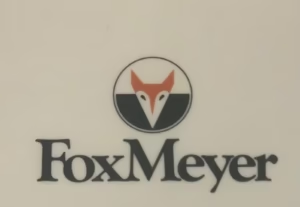
In the mid-1990s, FoxMeyer Drug stood as a titan in the U.S. pharmaceutical distribution industry. With annual revenues reaching $5 billion, the company efficiently processed approximately 500,000 orders daily across its 25 distribution centers. However, a strategic decision to modernize its operations led to an unforeseen downfall, transforming a thriving enterprise into a cautionary tale of technological missteps.
The Ambitious Leap into Automation
Aiming to enhance efficiency and capitalize on emerging technologies, FoxMeyer embarked on an ambitious project to implement an Enterprise Resource Planning (ERP) system for warehouse automation. The company allocated a budget of $65 million over 18 months, anticipating annual savings of $40 million—a move perceived as a game-changer.
The Unraveling of Expectations
Contrary to expectations, the newly implemented ERP system struggled to manage FoxMeyer’s substantial transaction volume. Order processing capabilities plummeted from 420,000 to a mere 10,000 per night. This drastic decline led to operational chaos: orders were lost, inventory counts became inaccurate, shipments faced delays, and distributors grew increasingly frustrated. The company incurred approximately $16 million in efforts to rectify these issues, but the damage was escalating.
Missteps Leading to Collapse
Several critical errors contributed to FoxMeyer’s rapid decline:
• Inappropriate System Selection: Despite expert warnings, FoxMeyer chose the R/3 ERP system, which was better suited for manufacturers rather than wholesalers. This misalignment meant the system was ill-equipped to handle the company’s specific order types.
• Lack of Proper Testing and Backup Plans: The company proceeded without adequate testing phases or contingency strategies. The abrupt, company-wide implementation left no room for gradual adjustments or fallback options, exacerbating operational disruptions.
• Employee Resistance and Sabotage: The sudden shift to automation faced resistance from warehouse workers, some of whom resorted to sabotage, further hindering the system’s effectiveness.
By 1996, FoxMeyer was hemorrhaging financially, with losses exceeding $100 million in attempts to resolve the escalating problems. The culmination of these issues forced the company into bankruptcy. Competitors, notably McKesson, capitalized on the situation, acquiring FoxMeyer for a fraction of its former value—$80 million.
Lessons Learned
FoxMeyer’s story underscores the critical importance of aligning technological solutions with a company’s specific operational needs. It highlights the necessity for thorough testing, the development of contingency plans, and the management of organizational change to ensure employee buy-in. This case serves as a poignant reminder that technological advancements, while promising, require meticulous planning and consideration to avoid catastrophic outcomes.
